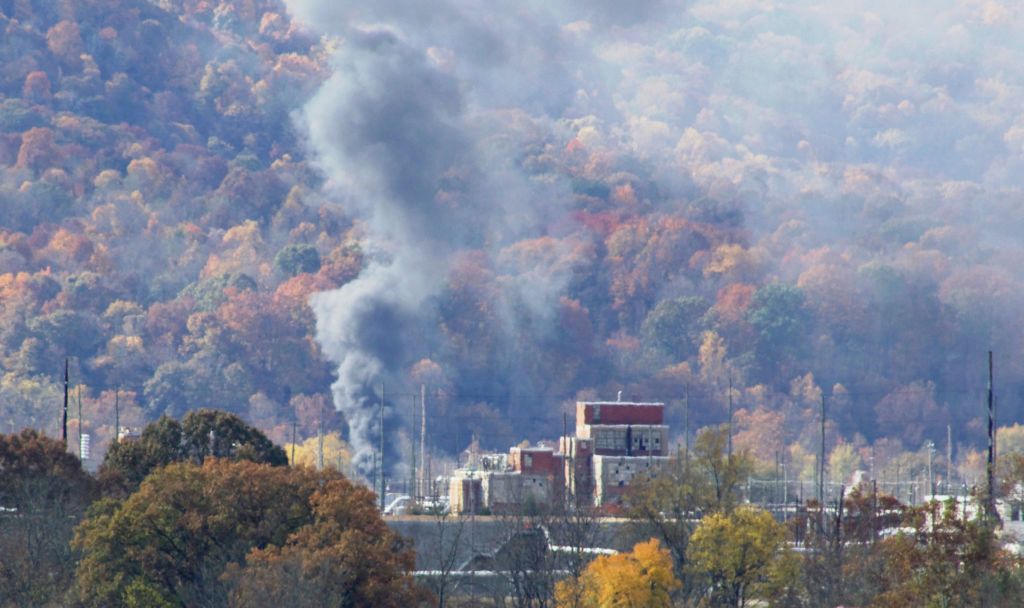
EVERY YEAR, Tennessee’s Holston Army Ammunition Plant is permitted to open burn 1,250,000 pounds of munitions wastes that may contain as much as 15% PFAS by weight. The open air burning has been ongoing for decades.
About PFAS in Munitions
What are PFAS?
Per- and polyfluoroalkyl substances (PFAS) are a group of man-made chemicals that includes PFOA, PFOS, GenX, and many other chemicals. PFAS are used to make fluoropolymer coatings and products that resist heat, oil, stains, grease, and water. The best-known fluoropolymer is polytetrafluoroethylene or Teflon.
Why do some military munitions contain PFAS?
PFAS are added to improve the performance and stability of military explosives and munitions.
What happens to PFAS when subjected to open air burning?
PFAS are not destroyed in an open fire and are therefore dispersed to the air and the surrounding environment where they accumulate in people, as well as fish and wildlife. At higher temperatures, poisonous hydrogen fluoride gas may be generated. Hydrogen fluoride is a listed hazardous air pollutant subject to regulation by U.S. EPA and authorized states under the Clean Air Act.
What health risks are associated with exposure to PFAS?
PFAS have been shown to affect growth and development, reproduction, thyroid function, the immune system, injure the liver and increase risk for certain cancers.
Holston Army Ammunition Plant, TN
Every year, Tennessee’s Holston Army Ammunition Plant is permitted to open burn 1,250,000 pounds of munitions wastes that may contain as much as 15% PFAS by weight.
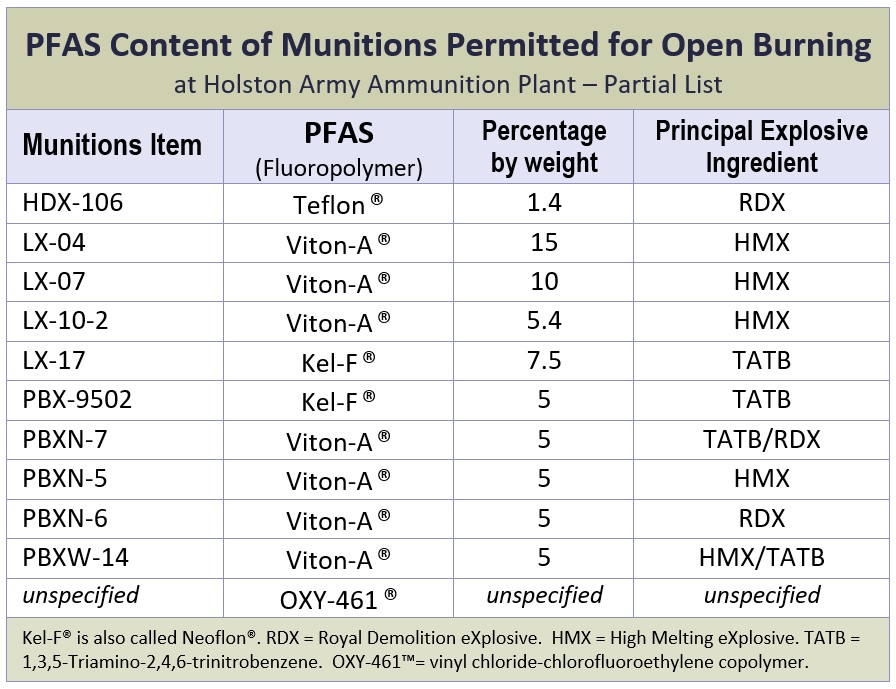
Why is the Army allowed to open burn PFAS and other toxic waste at Holston?
Both the U.S. EPA and Tennessee regulators are getting ready to re-issue permits allowing open air burning of wastes that contain PFAS and other toxic compounds. This burning has been going on for decades.
Can regulators prohibit the burning of PFAS and highly toxic wastes?
YES! At other military sites like the Blue Grass Army Depot in Kentucky, the military is prohibited from burning PFAS and dozens of other toxic wastes. Both Blue Grass and Holston are in EPA Region 4.
How you can help…
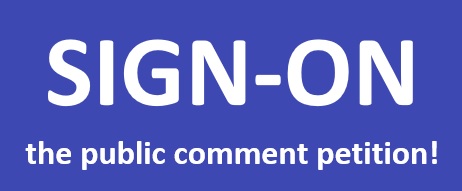 EPA Region 4 and the Tennessee Department of Environment and Conservation are preparing to issue a modification to Holston’s existing air permit allowing the military to continue open burning and releasing PFAS and other toxins to the environment.
EPA Region 4 and the Tennessee Department of Environment and Conservation are preparing to issue a modification to Holston’s existing air permit allowing the military to continue open burning and releasing PFAS and other toxins to the environment.
This petition was closed on January 15, 2021 and submitted as public comment to EPA Region 4 and Tennessee state regulators.
THANK YOU to the nearly 300 citizens who signed on – including representatives of 72 civic, environmental, veterans and health organizations!
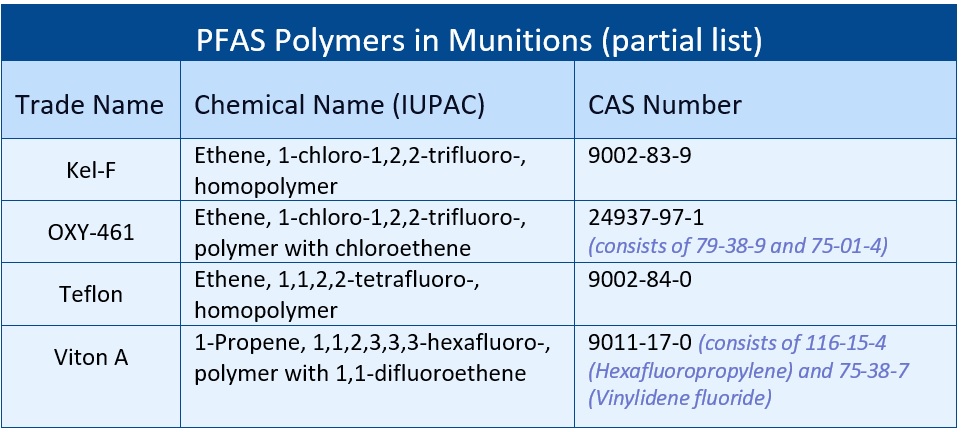
REFERENCES:
Organic Fluorine Compounds Military Aircraft Wright AFB 1955
Fluorinated Compounds Otto Fuel Propellants 1980
Thermal Decomposition Fluoropolymers Letters to Nature 2001
Energetic Materials Polymer Binder Thermal Decomposition LLNL 2004
Holston Army Response to Comments Burn Pans State of Tennessee PFAS Content April 2011
Polymers Binders & Plasticizers Book Chapter Wiley 2011
Characterization Plastic Bonded Explosives RDX HMX Dissertation Yeager 2011
Alternatives to Open Burning Holston Army Report Recommends Supercritical Water Oxidation SCWO 2012
Fluoropolymers Health Effects Associated with Exposures Fumes 2014
Alternatives to Burning PFAS Fact Sheet about SCWO Duke University April 2016
Teflon Viton Rocket Motors Thermal Stability Tests Barros 2016
FACT SHEET: Items Open Burned by Holston Army Ammunition Plant 28 Nov 2017
Transgenerational Model Baby Mother Plaecental Minnesota Water Guidance Goeden 2018
Bluegrass Army Depot OBOD Final Permit PFAS prohibition Nov 2018
Holston Army Public Meeting Slides Alternatives to Burning December 2018
MSDS Safety Data Sheet 3M Dyneon Fluoroelastomers Hydrogen Fluoride Emissions 2018
Holston Army Thermal and Non Thermal Solutions to Open Burning Phase 2 final April 2019
Holston CSWAB Citizen Petition Region 4 Burning PFAS July 2019
Kingsport Municipal Water from South Fork Holston River Consumer Confidence Report 2019
Holston Waste Stream Characterization TDEC Open Records Oct 2019
Alternatives to OB OD Conventional Munitions GAO Report 2019
PFAS in Energetic Materials Defence Technologies Valluri 2019
EPA Final Report on Alternatives to Open Burning Detonation Dec 2019
Holston Army Public Meeting Slides Groundwater Low Detections PFOA PFOS February 2020
Holston on List of DOD Installations Performing Assessments of PFAS Use or Potential Release 17 March 2020
EPA Request to Holston Army regarding RCRA Hazardous Waste Management Feb 2020
Army response to EPA regarding Holston Hazardous Waste Management April 2020
Army response to EPA regarding Holston Hazardous Waste Management APPENDIX I April 2020
Holston on MAP of Military Installations Conducting Assessments for PFAS Use or Potential Release 30 Sept 2020
Remediation and Degradation of Fluoropolymers Ammunition Applied Sciences 2020
PFAS Destruction Through Supercritical Water Oxidation Mikkelsen Nov 2020
NEW! SERDP Statement of Need Thermal Degradation PFAS in Munitions WPSON-22-C4 November 2020
Holston Clean Air Act Title V Modifications and Public Notice Dec 2020
Fluoropolymers Munitions PFAS Toxicity Scientific Paper Lohmann Dec 2020
Burning PFAS in Munitions Holston Action Alert CSWAB Jan 2021
Holston Permit TNHW-148 Subpart X Open Burn Miscellaneous Treatment Expires March 2021
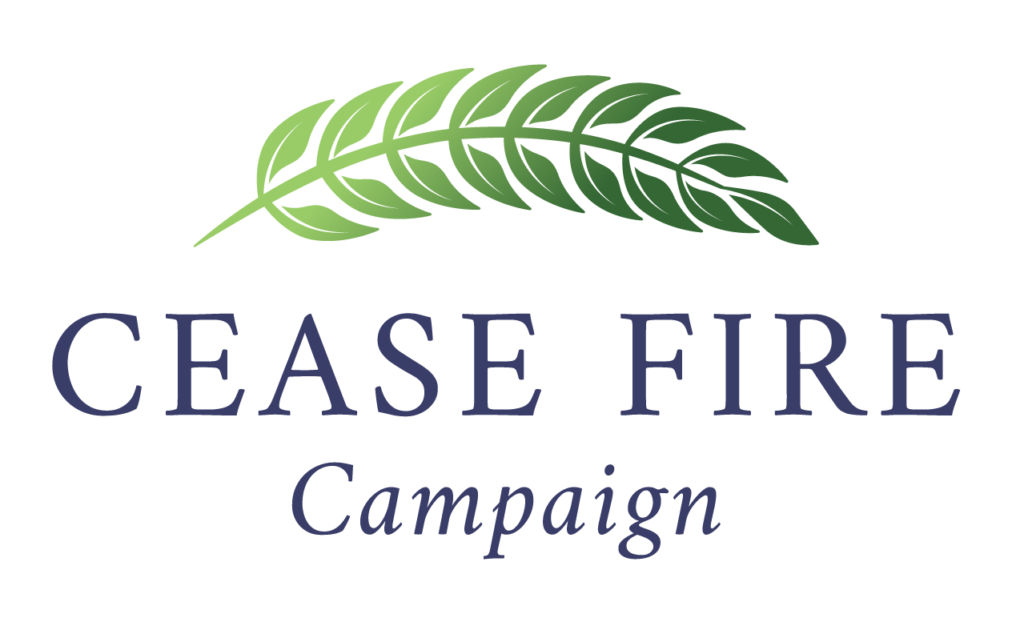
The Cease Fire Campaign is a national coalition of more than 60 environmental, labor, veterans service and social justice organizations. Our campaign seeks to protect human health and the environment by calling for the immediate implementation of safer alternatives to open air burning, detonation and incineration/combustion of military munitions. These alternatives must incentivize waste prevention and recycling; prevent, to the greatest possible extent, the release of toxic emissions and pollutants; and advance the principles of environmental justice by assuring that all people enjoy the same degree of protection and access to the decision-making process. The Campaign is coordinated by Citizens for Safe Water Around Badger (CSWAB.org).
